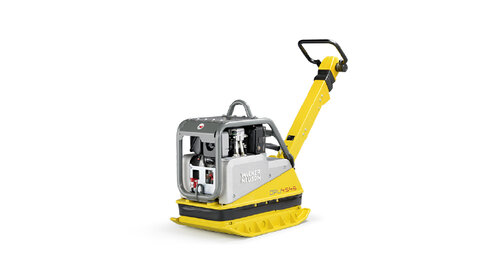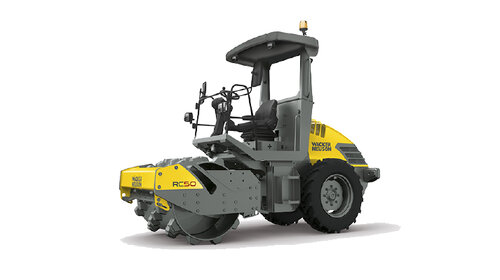Compaction is a critical step in many construction projects. Whether you’re building a road, laying down a foundation or preparing a site for heavy structures, achieving proper soil compaction is essential for stability and longevity. Without it, you risk uneven surfaces, shifting soil and even structural failures. That’s where compactors come into play.
A compactor is a machine designed to reduce the volume of soil or other materials by increasing its density. This is usually done by applying weight, vibration or impact to remove air pockets and bring particles closer together. The more compact the material, the more stable it becomes, which is critical for the integrity of construction projects.
In this article, we’ll break down the different types of compaction equipment used in the construction industry, explain how they work and recommend when to use each one.
Types of Compactors
Compaction equipment is broadly categorized into light and heavy categories, with further classifications based on the technique it uses for compaction. Each category is best suited for particular jobs and surfaces. Understanding the differences in these machines will help you choose the right one for your project, helping you prevent costly mistakes.
Light Compactors
Light compactors are ideal for smaller, more confined spaces and are generally used on cohesive or semi-cohesive soils. They’re best for situations where heavy machinery would be impractical or overkill.
Rammers (Tampers)
Rammers, also known as tampers, are perfect for compacting cohesive soils like clay and silt. These materials require a lot of force to remove air pockets due to their high moisture content and tendency to bind together. Rammers use a direct downward force to achieve deep compaction in smaller areas.
Best Use Cases:
- Narrow trenches and ditches.
- Confined spaces where larger machines can’t operate.
- Utility and pipe installation projects.
The compact, vertical movement of rammers makes them highly effective in places where you need to get a lot of force into a small area. However, they’re not suited for large, open spaces as they cover less ground with each stroke.
Plate Compactors
.webp)
Plate compactors are commonly used on granular soils like sand and gravel. Unlike rammers, which are designed for depth, plate compactors focus on surface compaction. They use a vibrating metal plate to press material together and are particularly useful for larger surface areas where rammers would be inefficient.
Best Use Cases:
- Compacting road base and asphalt.
- Sidewalk and pathway projects.
- Preparing subgrade for concrete slabs or pavements.
However, while plate compactors are effective for surface compaction, they lack the depth capabilities of rammers, so they should be used in combination with other equipment when deeper compaction is necessary.
Heavy Compactors
Heavy compactors are typically used for larger, open spaces where more significant force and coverage are required. These machines can handle a broader range of materials and are often used for extensive construction projects like highways, parking lots and large building foundations.
Walk-Behind Rollers
Walk-behind rollers are a type of heavy compactor, but they are still small and versatile enough to be used for patchwork and minor compaction tasks. They operate much like a larger roller but offer more precision for small jobs.
Best Use Cases:
- Patching asphalt on roads.
- Compacting small-scale projects like driveways and walkways.
- Landscaping projects that require precision.
Their compact size and ease of maneuverability make walk-behind rollers ideal for situations where full-size rollers would be impractical.
Ride-On Rollers
Ride-on rollers are the go-to for major compaction tasks. These machines cover large areas efficiently and apply significant pressure to the soil, making them ideal for projects that demand high levels of compaction. Both single drum rollers and double drum rollers are available, offering versatility depending on the project’s specific compaction needs.
Best Use Cases:
- Compaction of large, open spaces like parking lots or roads.
- Preparing large building foundations.
- Airport runway construction.
Ride-on rollers can handle both granular and cohesive soils, depending on whether they’re equipped with smooth or padded drums. The key advantage of ride-on rollers is their ability to compact large areas quickly, making them a staple in road construction and other large-scale projects.
Vibratory Compactors vs. Impact Compactors
In addition to being classified as light or heavy, compactors can also be specialized to meet specific needs, using vibratory or impact methods. Understanding the differences between these techniques is crucial, as each type is designed to handle certain surfaces and conditions with which standard compactors may struggle.
Vibratory Compactors
Vibratory compactors use high-frequency vibrations to compact granular soils. The vibrations help to rearrange particles more efficiently, allowing for deeper compaction without excessive pressure. These machines are particularly useful for working with sandy or gravelly soils, where traditional methods might struggle to achieve the same results.
Best Use Cases:
- Roads and highways.
- Subgrade preparation for concrete or asphalt paving.
- Large construction sites that require uniform compaction.
Impact Compactors
Impact compactors rely on repeated, forceful impacts to compact soil. These machines are highly effective at compacting cohesive soils, like clay, that are difficult to compact using vibration alone. The pounding motion forces air out of the soil and brings particles closer together, providing deeper and more consistent compaction.
Best Use Cases:
- Deep compaction of clay-like soils.
- Projects that require high levels of compaction over a limited area.
- Foundation work where deep stability is crucial.
Choosing the Right Compactor
When selecting the appropriate compaction equipment for your project, there are three key factors to consider: soil type, project size and site conditions.
1. Soil Type
The type of soil you're working with will largely dictate the kind of compactor you should use. For cohesive soils like clay and silt, you’ll need a machine that provides deep, forceful compaction—like a rammer or an impact compactor. For granular soils like sand and gravel, vibratory compactors or plate compactors will give you the best results.
2. Project Size
For small projects, such as patching a driveway or compacting a narrow trench, lighter equipment like walk-behind rollers or rammers is typically sufficient. On larger projects, like road construction or building foundations, ride-on rollers will provide the coverage and compaction depth you need.
3. Site Conditions
Is the site flat, or are there confined spaces and narrow areas? For confined spaces, lighter, more maneuverable compactors like rammers and walk-behind rollers are ideal. If you’re working in open, expansive areas, heavier machines will work more efficiently.
Compactor Rentals From EquipmentShare
Choosing the right compactor for the job can make all the difference in the quality and efficiency of your project. Whether you’re compacting a trench with a rammer or preparing a road with a ride-on roller, understanding the various types of compaction equipment and their applications is essential to getting the job done right.
Looking to rent a compactor for your next job? EquipmentShare is here to help. Explore our compaction equipment rental options and find the best machine for your project’s needs.

.svg)
.svg)
.webp)













